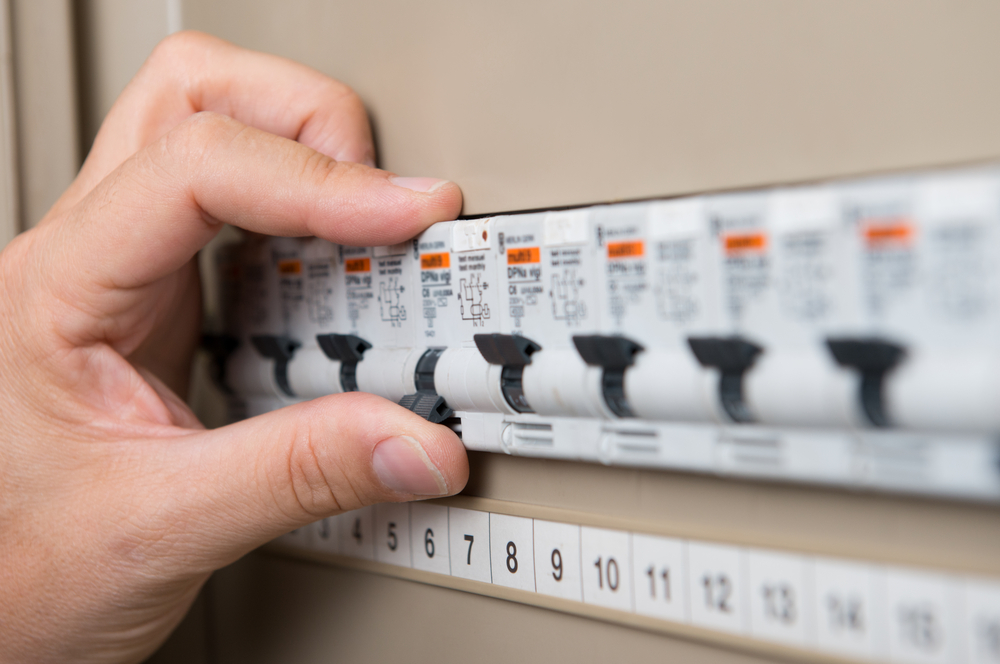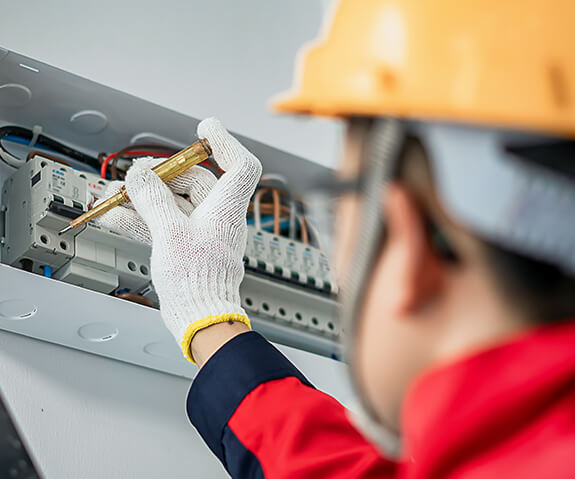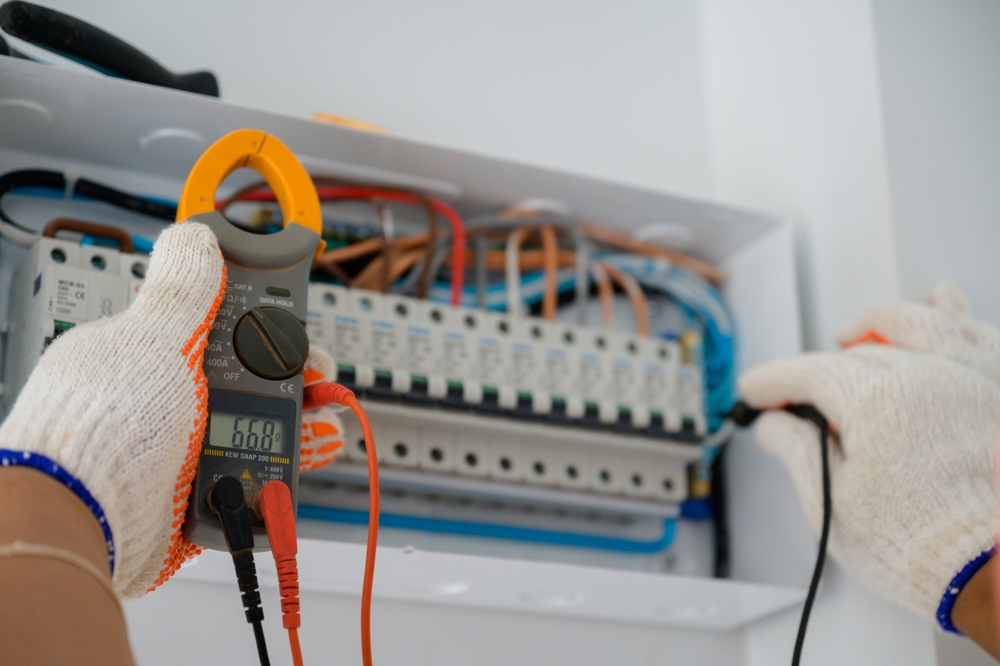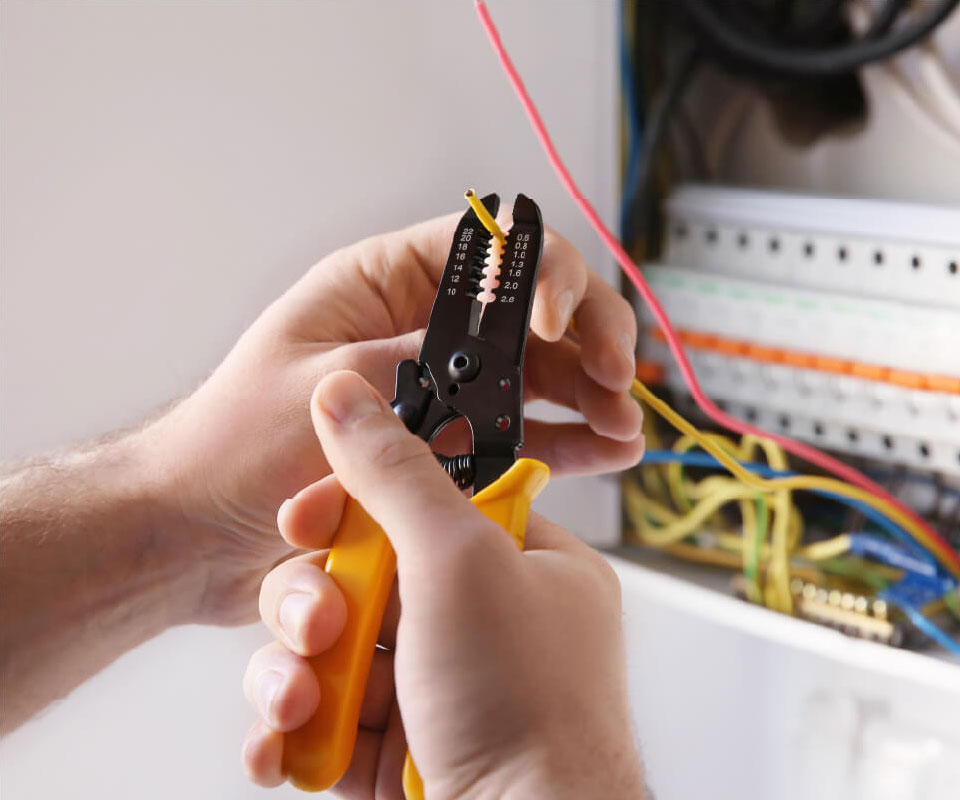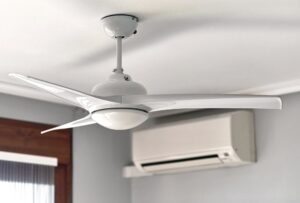AFCI breakers provide protection against electrical fires caused by arcing faults, while GFCI breakers protect against ground faults. While their installation methods vary slightly, both serve the same circuit protection purpose. When replacing an old standard circuit breaker, professional electricians are required by law to install an AFCI breaker if the circuit requires it, ensuring full compliance with the code. The cost of rewiring a circuit breaker depends on factors such as wiring type, length, and any necessary wall and drywall repair, ranging from $150 to $1,000+.
How Circuit Breakers Work
The primary function of circuit breakers is to protect your electrical system from damage caused by overcurrent, short circuits, or ground faults. They do so by detecting these issues and interrupting the flow of electricity, preventing potential damage to your appliances or even fires. The amount of electricity needed for your home depends on factors such as the size of your home, the number of appliances, and other relevant factors.
The typical cost associated with installing or adding a new circuit breaker ranges from $150 to $300, depending on factors such as the type, amps, circuit length, and complexity. A 240V circuit breaker, for example, can cost between $10 and $250. Factors that can contribute to the expense of installing a new circuit breaker include extensive drywall demolition and restoration, or running the wire up through multiple stories. The estimated cost for installing a dedicated circuit ranges from $250 to $900.
Signs Your Circuit Breaker Needs Replacement
Observing any signs that your circuit breaker may need a replacement is vital. Frequent tripping, flickering lights, burning smells, or visible damage to the breaker are all indications that it’s time for a replacement. Additionally, if you’re experiencing frequent bulb burnouts, buzzing, sparking, or smoky odours from switches or appliances, considering a replacement is advisable. Replacement may be necessary due to wear and tear, internal switch linkage damage, power surges or lightning strikes, and water damage.
The cost to replace a circuit breaker switch depends on factors such as the type, amps, circuit length, and the complexity of the circuit, ranging from $100 to $200. To prevent further damage and safety hazards, it’s crucial to replace damaged components promptly. Next, we’ll outline the procedure for replacing a circuit breaker and emphasize the importance of adhering to safety precautions.
Steps to Replace a Circuit Breaker
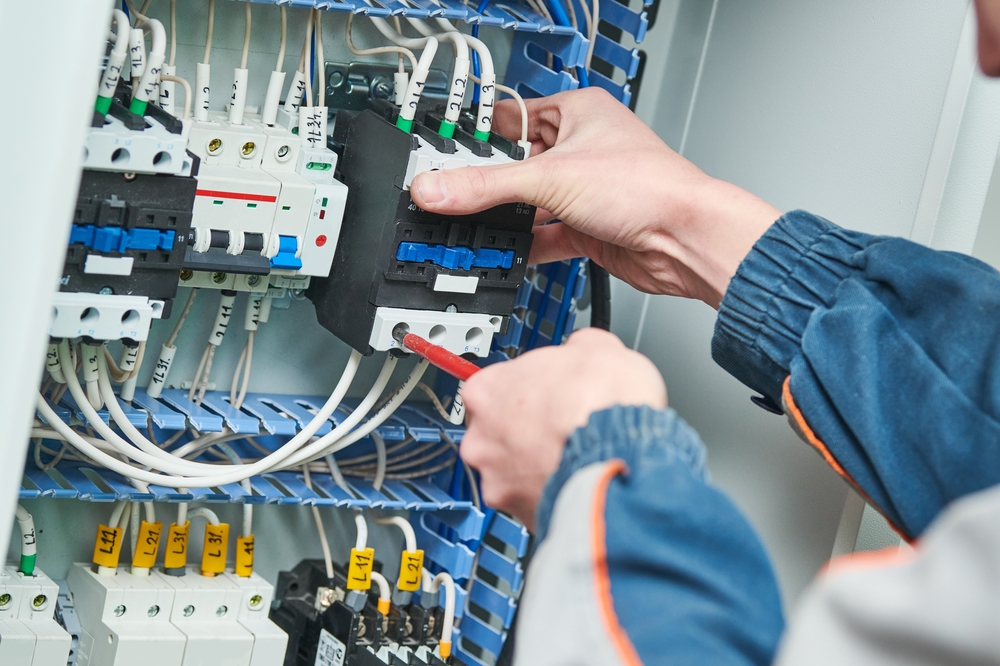
Having covered the basics of circuit breakers and the signs indicating a need for replacement, we’ll now delve into the detailed process of replacing a circuit breaker.
This will involve preparing for the replacement, removing the old breaker, and installing the new breaker, ensuring safety and compliance with electrical code requirements.
Preparing for Replacement
Before you begin the replacement process, gather the necessary tools and ensure all safety precautions are in place. Start by turning off the main power to your electrical panel, minimizing the risk of electrical shock or injury. Remember, adhering to all safety guidelines and avoiding large wires and lugs is vital during this process.
Once you’ve turned off the main power and gathered your tools, you’re ready to move on to the next step: removing the old breaker.
Removing the Old Breaker
To remove the old breaker, follow these steps:
- Carefully disconnect the wires connected to it.
- Unscrew the screw terminal gripping the black circuit wire.
- If you’re replacing an AFCI or GFCI breaker, disconnect the neutral circuit wire connection and the coiled white pigtail wire as well.
Remember to proceed cautiously during this step to minimize the risk of damage or injury.
With the wires disconnected, you can now remove the old breaker from the panel and prepare for the installation of the new breaker.
Installing the New Breaker
When installing the new breaker, start by connecting the wires to the appropriate terminals.
- Insert the bare end of the black circuit wire under the screw terminal on the new breaker and securely tighten the screw.
- Connect the white neutral circuit wire to the corresponding screw terminal on the breaker, if replacing an AFCI or GFCI breaker.
- Attach the coiled white wire attached to the circuit breaker to a screw terminal on the neutral bus bar in the panel.
- Push any surplus wire into the panel.
- Carefully fold the extra wire and insert it into the side of the panel.
Once the wires are connected and the new breaker is securely installed, it’s time to test the installation. Replace the service panel cover and ensure all individual circuit breakers are in the OFF position before turning the main breaker on.
Activate the lever on the main circuit breaker to the ON position, and then activate each individual branch circuit breaker to the ON position, one at a time. Test the fixtures and outlets powered by the circuit to confirm proper function.
Hiring a Professional Electrician
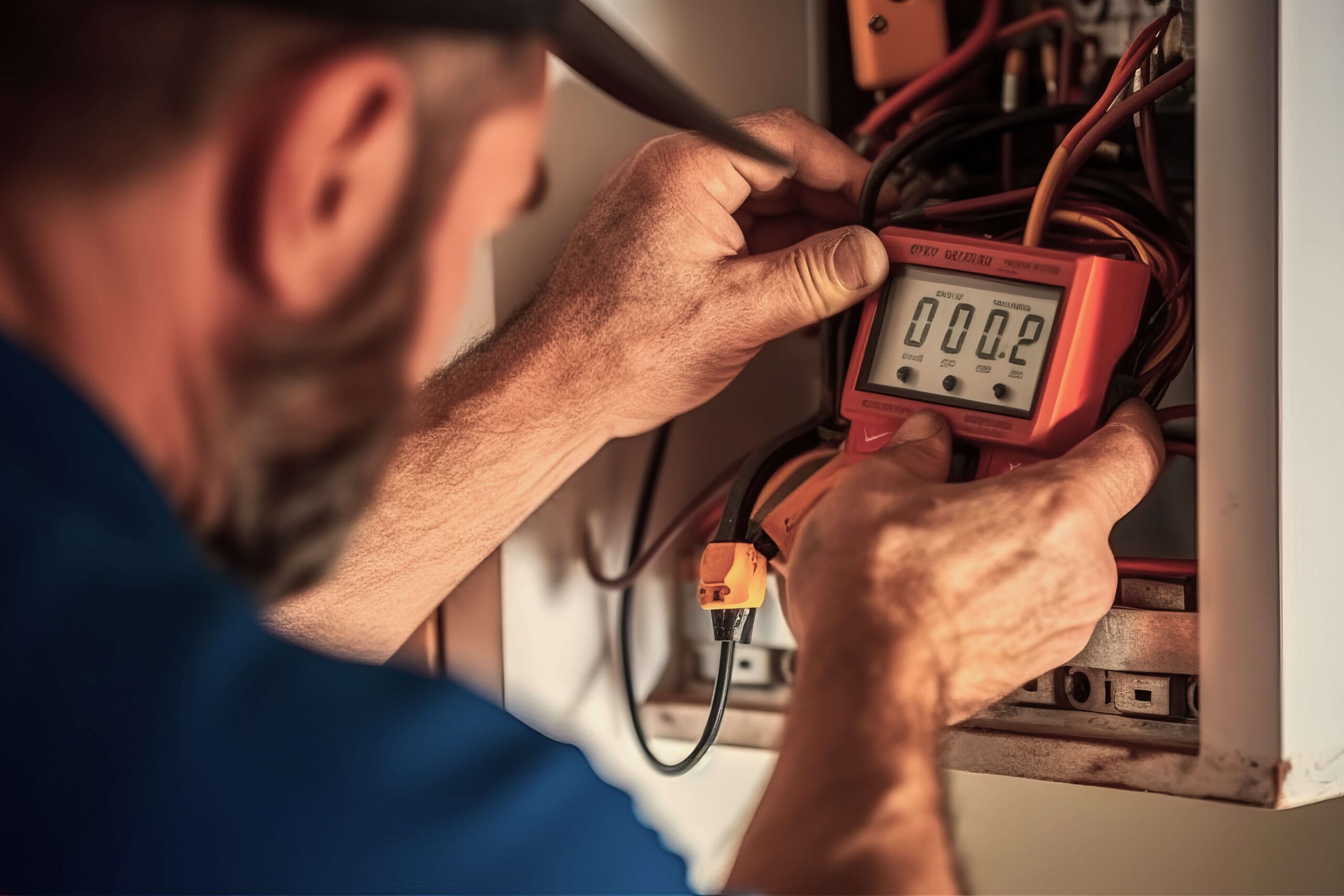
Despite the seeming simplicity of replacing a circuit breaker, it is worth contemplating the hiring of a professional electrician to address safety concerns and potential permit requirements. Electricians are experienced in handling potentially hazardous wiring and ensuring compliance with local electrical codes.
Next, we’ll explore how to identify a reputable electrician and discuss the costs involved in hiring one for circuit breaker replacement.
Finding a Reputable Electrician
Identifying a reputable electrician is key to guaranteeing the safety and quality of your circuit breaker replacement. To identify a qualified electrician, check for proper licensing, insurance, and references. Obtaining multiple quotes from different electricians can also help you make an informed decision and find the best professional to handle your project.
Don’t hesitate to ask questions and seek clarification from potential electricians about their qualifications and experience. Remember, the safety and reliability of your electrical system depend on the expertise of the electrician you choose, so it’s crucial to select the right professional for the job.
Cost of Hiring an Electrician
Factors such as location, complexity, and labour rates can influence the cost of hiring an electrician for circuit breaker replacement. Typically, the cost of hiring an electrician for circuit breaker replacement includes:
- Hourly rate: The hourly rate for an electrician ranges between $50 and $150.
- Minimum charge: Many electricians charge a 1- to 2-hour minimum for their services.
- Time required: It is estimated to take between 30 minutes and 2 hours to replace a circuit breaker. This range depends on the type of circuit breaker that needs to be changed.
When contemplating circuit breaker replacement, taking into account the cost of hiring an electrician is advisable. While it may be tempting to attempt the replacement yourself, hiring a professional ensures proper installation, compliance with electrical codes, and ultimately, the safety of your home and family.
